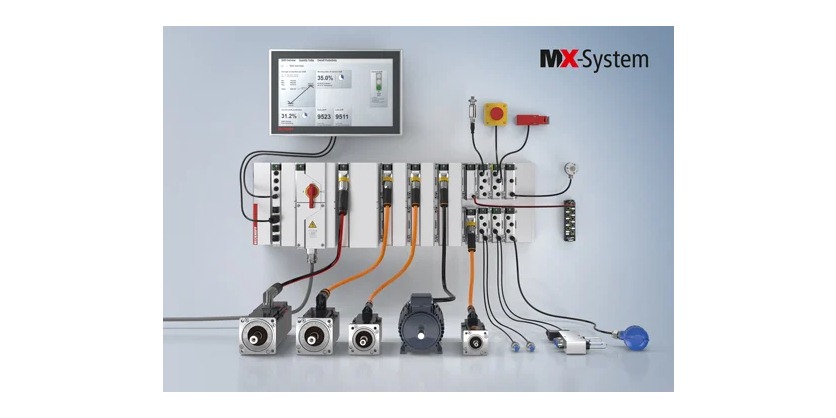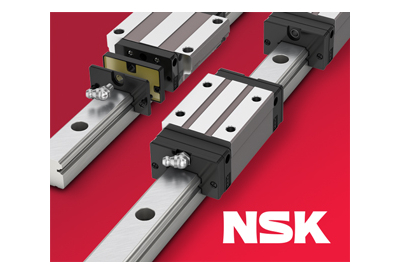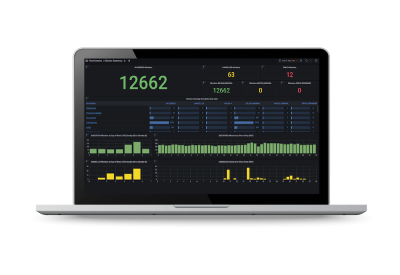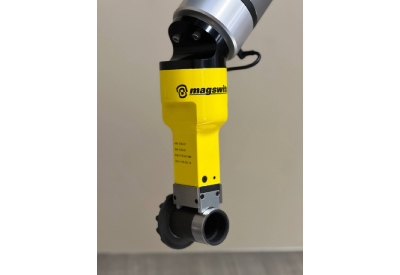Beckhoff Redefines Cabinetless Automation with New Plug-and-Produce MX-System
With pluggable IPC, I/O and drive technology modules from Beckhoff, the IP67-rated system delivers maximum space and time savings for machine builders and end users
November 14, 2022

The MX-System from Beckhoff is a flexible, space-saving and intelligent automation hardware system that can completely replace conventional control cabinets, creating entirely new levels of efficiency in plant automation. Control system installation processes that normally took 24 hours or more can now be completed in just one hour
As a modular control cabinet replacement that can also be decentralized on the machine if required, the MX-System saves engineering, assembly, installation and maintenance efforts. This promotes highly efficient processes for the manufacturers and operators of machines and systems – from the planning, setup and installation of the MX-System through to the maintenance of MX-System-equipped machines.
The basic concept of the MX-System is to standardize the electrical and mechanical interfaces for all electronic and electromechanical components. This novel approach results in two interfaces:
- The data interface integrates each functional module into an EtherCAT network and supplies it simultaneously with 24 V DC and, if necessary, also with 48 V DC.
- A second interface has been defined as standard for the low-voltage range. These interfaces distribute the mains voltage of up to 480 V AC and a DC voltage of up to 600 V for the drive system.
This standardization means all functionality traditionally found in a control cabinet can be mapped in a backplane system. Just like the interfaces, there are two different backplane types, which have the described interfaces in the form of connectors as essential features. The backplanes feature robust aluminum housings for maximum durability. The combination of the backplane and housing is called a baseplate.
In addition, there is a full range of function modules from the areas of IPCs, bus couplers, I/O, motion, relays and system power supply. These are simply plugged in and screwed onto the baseplate. The combination of a baseplate and function modules results in an IP67-protected automation system that optimizes space utilization and can mount directly on the machine.
MX-System advantages for engineers
The system architecture of a baseplate combined with function modules results in a highly modular solution that helps solve a wide range of automation tasks without enclosures. A particular advantage is that the MX-System function modules integrate individual functions, such as line protection for outgoing lines. This facilitates project planning and significantly reduces the number of components. As a result, these advantages can reduce the number of pages in circuit diagrams and parts lists by up to 80%.
Even in the engineering phase, the low installation space requirements of the MX-System create further advantages by facilitating better collaboration between departments. For example, there is usually no need to design special installation spaces and brackets for the system. The MX-System also meets the requirements of important control cabinet standards and, in contrast to conventional cabinets, it also complies with IEC, UL and CSA, making it a globally standardized solution.
Advantages for automation system setup
The principle of plugging function modules onto a baseplate and fastening them with screws not only revolutionizes control cabinet design but also completely replaces it in the form known today. This approach eliminates mechanical assembly of the control cabinet and its own mounting plate as well as time-consuming manual wiring. Through these advantages, an MX-System can be set up within just one hour, including the necessary tests and checks. For a comparable control cabinet, the total setup time would be at least 24 hours. As a result, the MX-System also addresses the persistent shortage of skilled workers, as it takes individual employees significantly less time to complete a given task.
From a logistical point of view, there are also clear advantages for control cabinet design. By eliminating mechanical work steps, assembly tasks require considerably less space. Processes such as external control cabinet design can be completely dispensed with, and wiring errors no longer occur.
Advantages in machine installation
The MX-System integrates visually and functionally into the machine installation space due to its considerably compact design compared to conventional solutions. This reduces the machine footprint many times over. The possibility of cascading MX-System installations enables modular machine concepts. In addition, there are significantly shorter cable runs to the sensor or actuator level. The use of pre-assembled cables shortens the installation time further and provides a high level of protection against errors during cable connection. The connections do not have to be completed by specially trained electricians due to the simple plug-and-produce nature of the modules.
Advantages for the machine end user
For the machine end user, there are clear advantages in terms of service and maintenance: the MX-System consists of components that are networked throughout via EtherCAT, so comprehensive system diagnostics are always available. In addition to classic status LEDs, each function module has a unique serial number in the form of a DataMatrix code. This code can be scanned via a smartphone app, which connects the smartphone to the controller to retrieve diagnostic data on the corresponding function module.
MX-System module exchange is also very easy, since the modules are hot-swappable and can be plugged in and unplugged during operation. Just like the manufacturer of the machine, operators also benefit from the fact that the modular MX-System covers the complete range of automation technology with considerably fewer parts and therefore fewer assemblies to stock as spares. Through their simple basic principle, MX-System modules can also be reused very easily beyond the life cycle of the machine.
More Infromation
Relate Story
Beckhoff Introduces Frequency Analysis without Programming Requirements
TwinCAT Analytics software from Beckhoff offers a complete workflow from acquisition of data through to its storage and analysis to dashboards for continuous machine monitoring. Traditional condition monitoring algorithms are now also available in TwinCAT Analytics using simple configuration with no programming requirements. This addition optimizes both the standard workflow and spontaneous measurements, such as during machine commissioning or service.




